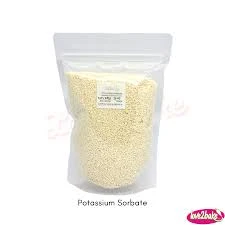
residual solvents
Understanding Residual Solvents Implications and Importance
Residual solvents are organic volatile chemicals that can remain in pharmaceutical products, foods, and other consumer goods after the manufacturing process. These solvents are typically used during the synthesis of chemical compounds to aid in the dissolution and purification processes. Understanding the implications and importance of residual solvents is crucial for ensuring safety and compliance in various industries, particularly pharmaceuticals.
The Significance of Residual Solvents
In the pharmaceutical industry, residual solvents can pose potential health risks to consumers. Some solvents may be toxic, carcinogenic, or have other harmful effects when ingested or absorbed by the body. Therefore, regulatory bodies such as the U.S. Food and Drug Administration (FDA) and the European Medicines Agency (EMA) have established guidelines to limit the permissible levels of residual solvents in pharmaceutical formulations. The International Conference on Harmonisation (ICH) has also issued specific guidelines, notably ICH Q3C, that categorize solvents based on their levels of toxicity and set allowable limits.
Categories of Residual Solvents
The ICH Q3C guideline classifies residual solvents into three classes
1. Class 1 Solvents These are highly toxic and should be avoided in the manufacturing process. Examples include benzene, carbon tetrachloride, and methylene chloride. The presence of these solvents in pharmaceutical products is unacceptable, and manufacturers must take measures to eliminate them entirely.
2. Class 2 Solvents These solvents may be toxic but can be permitted in small amounts if the benefits of their use outweigh the risks. Examples include toluene and ethyl acetate. Regulatory authorities provide limit values for these solvents to ensure that consumer safety is prioritized.
residual solvents

3. Class 3 Solvents Considered less toxic, these solvents may be utilized but should still be minimized whenever possible. Examples include acetone and ethanol. Manufacturers are encouraged to demonstrate that the use of Class 3 solvents does not pose significant health risks.
Testing for Residual Solvents
To ensure compliance with regulatory standards, manufacturers must conduct thorough testing for residual solvents during the production process. This typically involves analytical techniques such as Gas Chromatography (GC) or Headspace Gas Chromatography. These methods enable the detection and quantification of residual solvents to ascertain whether they fall within the acceptable limits established by regulatory authorities.
Impacts on Product Quality
The presence of residual solvents can also impact the overall quality and efficacy of pharmaceutical products. Contaminants from residual solvents can affect drug stability, bioavailability, and metabolism, ultimately influencing therapeutic outcomes. It is, therefore, essential for manufacturers to implement robust quality control measures and utilize solvent-free or low-solvent alternatives wherever possible.
Conclusion
In conclusion, residual solvents play a significant role in the manufacturing and formulation of various products, particularly pharmaceuticals. While they can enhance the efficiency of production processes, their presence can also pose health risks and impact product quality. Regulatory guidelines have been established to govern the use of residual solvents, reflecting a commitment to consumer safety and industry integrity. By understanding the implications and adhering to established standards, manufacturers can mitigate risks associated with residual solvents and protect public health, thereby fostering trust and confidence among consumers. As the industry continues to evolve, ongoing research and innovation will be crucial in developing safer manufacturing practices and minimizing the reliance on harmful solvents.
-
Buy High-Quality Trichloroisocyanuric Acid for Sale | TCCA 90% SupplierNewsAug.30,2025
-
Pure Sodium Dichloroisocyanurate Dihydrate | Powerful DisinfectantNewsAug.29,2025
-
Industrial Chemicals: Quality & Purity for Every IndustryNewsAug.28,2025
-
Nitrile Rubber Honoring Strict Production StandardsNewsAug.22,2025
-
Aspartame Ingredients Honoring Food Safety ValuesNewsAug.22,2025
-
Fertilizer for Balanced Plant NutritionNewsAug.22,2025
-
Cyanide Gold Processing with High Purity AdditivesNewsAug.22,2025
Hebei Tenger Chemical Technology Co., Ltd. focuses on the chemical industry and is committed to the export service of chemical raw materials.
-

view more DiethanolisopropanolamineIn the ever-growing field of chemical solutions, diethanolisopropanolamine (DEIPA) stands out as a versatile and important compound. Due to its unique chemical structure and properties, DEIPA is of interest to various industries including construction, personal care, and agriculture. -

view more TriisopropanolamineTriisopropanolamine (TIPA) alkanol amine substance, is a kind of alcohol amine compound with amino and alcohol hydroxyl, and because of its molecules contains both amino and hydroxyl. -

view more Tetramethyl Thiuram DisulfideTetramethyl thiuram disulfide, also known as TMTD, is a white to light-yellow powder with a distinct sulfur-like odor. It is soluble in organic solvents such as benzene, acetone, and ethyl acetate, making it highly versatile for use in different formulations. TMTD is known for its excellent vulcanization acceleration properties, which makes it a key ingredient in the production of rubber products. Additionally, it acts as an effective fungicide and bactericide, making it valuable in agricultural applications. Its high purity and stability ensure consistent performance, making it a preferred choice for manufacturers across various industries.





